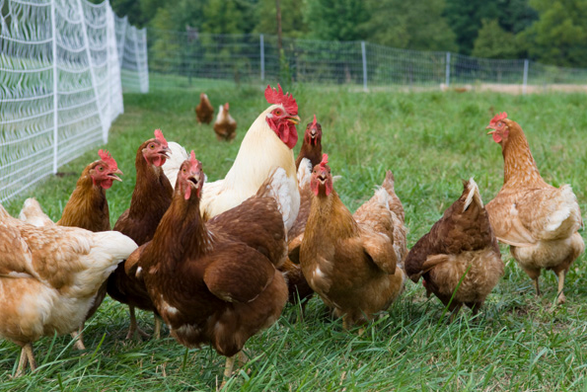Want to venture into the business of poultry farming? Kenya’s (and Africa's) demand for poultry is growing at a steady rate of at least 5% per year all thanks to our diverse middle-class society segment which currently comprises about 44.9% of our active population.
One thing you should know about the middle class is that they are heavy spenders – and they are frequent visitors of fast food joints. The fastest moving products in fast food joints are poultry products and this explains why this is just the right time to be on the supply-side of this market.
Let us briefly guide you on the basics and estimates of starting a successful chicken farm…later on we'll talk about turkeys, guinea-fowl etc.
You’ll Require
- Land – At least 40ftx60ft
- Well Ventilated Cages – Ksh60,000 (to construct)
- 100 One-Day Old Chicks – Ksh10,000
- Chicken Feeds – Ksh100,000
- Vet Products & Miscellaneous – Ksh30,000
(1)Land
Choose a piece of land that is in an open, secure and well-drained. The land should be near a source of electricity and should generally be easily accessible via motorized means of transport
(2)Cages
Cages should be built in such a manner that they occupy at least half of the land. Tell your carpenter to allow for ventilation to the east and west of each cage. Also, very important, make sure to put cement flooring.
(3)Day-Old Chicks
Don’t take short-cuts when it comes to buying chicks. If you want quality chicks that pay back your investment in 6 months then you better buy from an accredited retailer. Examples of renowned retailers of day old chicken in Kenya are: Muguku (Kikuyu), Bradegate (Nyeri) and Kenchic (Across the country). Alternatively you can buy from your reliable friends or referrals.
(4)Chicken Feeds
Don’t underestimate the cost of feeding the chicken. Feeds alone can gobble up to 70% of the cost of maintaining the farm. A 20kg bag of feeds costs Ksh.800 or thereabout and you can expect to buy feeds worth Ksh18,000 and above per month. Note: You can subsidize feeds with sunflower seeds or other cheaper sources of nutrients as may be recommended by your vet.
(5)Vet Products & Miscellaneous
All other tools and inputs you will need vary depending on where your farm is and the diseases that are likely to affect your chicken. It is recommended to keep an open back up budget for this cost head. For a small farm of 100 chicken we recommend you set aside a back-up budget of at least Ksh30,000.
****
The overall budget of setting up the farm comes to about Ksh200,000. Let us now look at the returns side of the story.
****
Returns
Let’s assume that all out of the 100 chicks you bought live to maturity and that 85 are hens and 15 cockerels. After 6 – 7 months (the time it takes for chicks to reach full maturity) you’ll be expecting at least 80 eggs per day. That adds up to 2500 eggs per month.
You can opt to sell some unfertilized eggs of which each egg goes for Ksh12 (Or Ksh280 per tray on wholesale) at the current market rate.
Alternatively you can sell fertilized eggs of which each egg goes for Ksh30 (Or Ksh900) per tray on wholesale) at the current market rate.
Another option is to keep the fertilized eggs in a hatchery until they hatch and you sell the chicks. Day old chicks go for Ksh100 each at the current market price.
****
Say you make the following sales (per month):
- Sell 1000 Unfertilized eggs – Ksh12,000
- Sell 1000 fertilized eggs – Ksh30,000
- Sell 300 Chicks – Ksh30,000
- 200 eggs – Spoilt
- Total – Ksh72,000
Minus expenses and your small farm will give you Ksh50,000 income per month with just 100 chicken. Moreover, you can boost your returns by adding more chicken and branding to differentiate your products so you can charge a premium.
But there’s no Market!
People who say there is no market are ones who are not keen to approach potential buyers – as an entrepreneur we believe you should be in a position to actively look for the market instead of waiting for vice-versa to happen.
The best target markets include: Education institutions, fast food restaurants, retail supermarkets and general consumers. Take a minute to read through our latest article on >>>marketing tactics to gain some useful tips.
Photos Courtesy: Various Websites





















